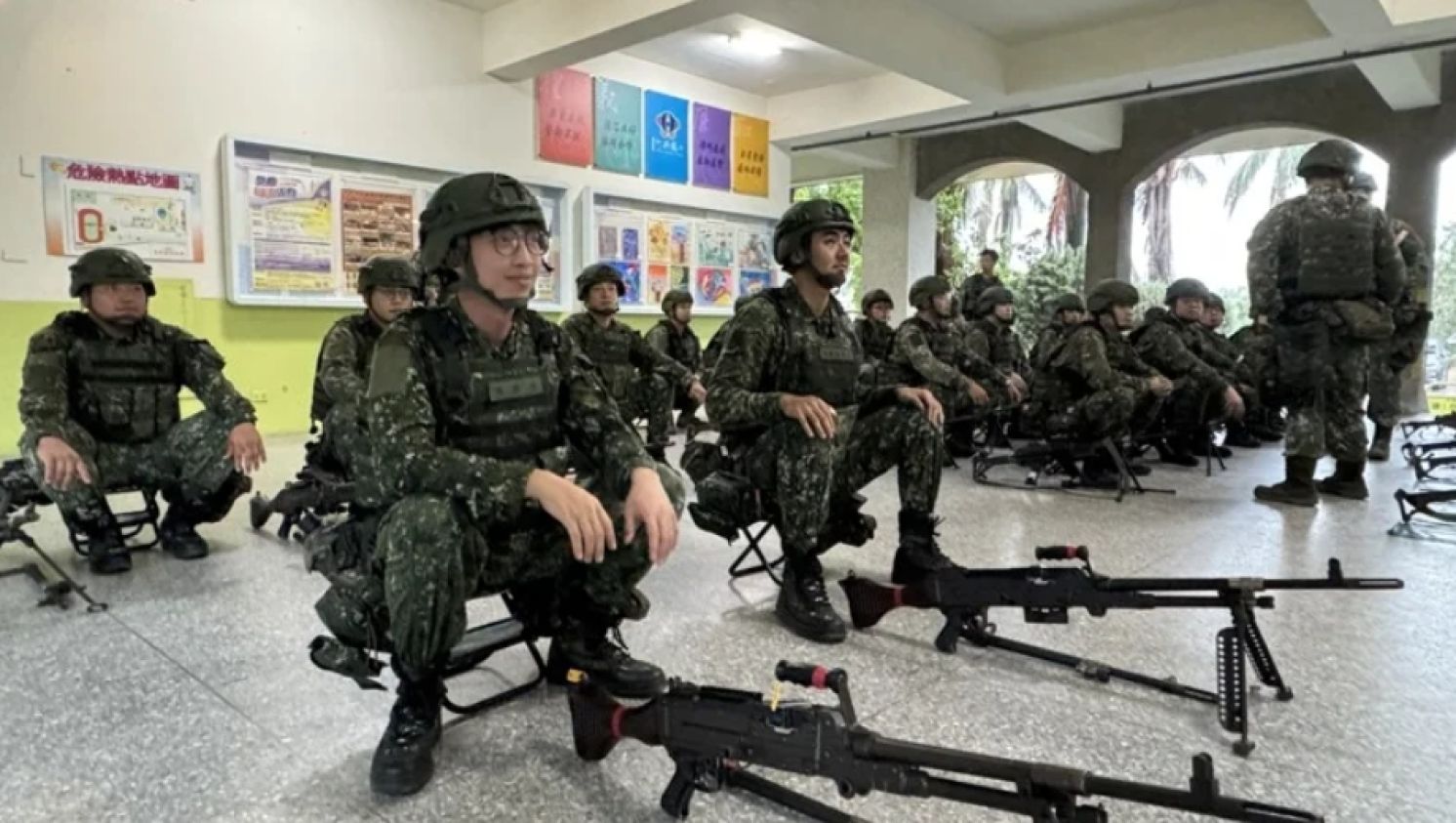
A Mere Show: Han Kuang Military Exercises Miss the Point
By Wang Kun-yi, China Times, July 10, 2025
The Han Kuang No. 41 live-fire military exercise is underway from July 9 to 18, featuring a continuous 10-day, 9-night operation. According to the Armed Forces, the exercise scenario gradually escalates from gray zone incursions to full-scale combat, designed to test the armed forces’ ability to transition from peacetime to wartime and to prepare for deployment. However, shortly after the exercise began, a spokesman of mainland China’s Ministry of National Defense dismissed it as “a bluff and self-deception aimed at dragging Taiwanese civilians onto the separatist war wagon.” So, is Han Kuang No. 41 truly just a bluff as the People’s Liberation Army (PLA) claims?
In his fourth speech on national defense as part of his speech tour on national unity, President Lai Ching-te revealed that the United States is strengthening Taiwan’s military capabilities through joint exercises and exchanges involving the National Guard and Coast Guard. This shows that much of Taiwan’s strategic deployment is trained and guided by the U.S. military. Among these, the “urban resilience exercises,” which simulate tactical operations in towns, raise questions about their relevance to Taiwan Strait warfare.
Since the administration of former President Chen Shui-bian proposed the “decisive battle offshore” concept, the Democratic Progressive Party (DPP) has envisioned conflict scenarios occurring outside Taiwan’s main island. Past war plans assumed battles would be limited to beaches, evolving into strategies of “defense-in-depth” and “multi-layered deterrence,” all to avoid bringing warfare onto Taiwanese soil—a principle summarized as “the first battle is the decisive battle.”
However, under recent U.S. guidance, Taiwan’s military has begun to prepare for bringing combat onto the island itself, influenced by the Russia-Ukraine conflict. Yet Taiwan’s strategic space and depth are limited. Conducting urban warfare on the island to achieve “resilience” raises questions about the odds of success against the PLA’s mass infantry tactics.
In fact, since the Afghan and Iraq wars, the U.S. military has avoided deploying troops for urban combat. In Ukraine, the United States supplies weapons to wear down Russian forces but sends no soldiers into the battlefield. In the Israel-Iran conflict, American involvement is limited to airstrikes after missile and drone exchanges, turning the conflict into a largely unmanned warfare testbed.
Taiwan, by contrast, seems to be going the opposite way. In Han Kuang No. 41, not only is the exercise lengthened, but the scenario advances from gray zone incursions to urban resilience combat. If Taiwan struggles to withstand gray zone harassment, then how can it fend off the PLA’s overwhelming manpower tactics in urban warfare?
Looking at the PLA’s past exercises targeting Taiwan, Beijing does not seek to annihilate Taiwan outright. The most effective “punitive” measure would be a blockade. Only afterward might missile strikes target key leaders in a decapitation strategy. If Taiwan’s military and political leadership were wiped out by PLA missiles and drones, would the Taiwanese people still have the will to resist? Since most Taiwanese favor peaceful cross-strait relations, if war breaks out, few would want the fighting on their doorstep.
In recent years, the DPP administration has frequently used terms like gray zone, urban warfare, and resilience—new military buzzwords largely created by the U.S. military. While these terms sound formidable, their actual strategic and tactical relevance to PLA operations is questionable. At least, the PLA seldom uses similar language.
Take the “urban resilience exercise” itself: the concept of “resilience,” introduced by the United States, refers to the ability of individuals, communities, or systems to adapt to sudden challenges, absorb shocks, and rapidly recover to normalcy. It includes physical resilience, such as infrastructure restoration, and psychological resilience, such as mental coping capacity.
However, President Lai’s speeches on national unity repeatedly divides the population by labeling “impure” elements, only seeking to unite his own circle of “Bluebirds.” How can Taiwan achieve true resilience under such social fragmentation? Whether borrowing U.S. military concepts truly fits Taiwan’s social reality is worth pondering.
After all, the PLA’s military rhetoric still relies more on traditional terms like blockade, deterrence, and island encirclement. Without truly understanding PLA terminology and their operational assumptions, Taiwan’s numerous Han Kuang exercises risk becoming parallel showdowns—“you fight your way, I fight mine”—largely serving to help the United States deplete weapons rather than effectively defending the Taiwan Strait.
Hence, Taiwan’s use of U.S. military jargon in Han Kuang exercises may fail to cultivate an “know your enemy” understanding of the PLA’s operations. It is no surprise that Beijing mocks the DPP administration for “bluffing.” The leaders from across the strait clearly believe Han Kuang No. 41 will have little impact on Taiwan’s defense.
(The author is chairman of the Taiwan International Strategic Study Society.)
From: https://www.chinatimes.com/opinion/20250710000006-262110?chdtv